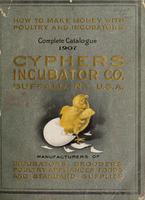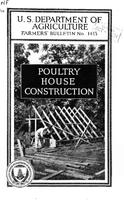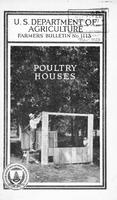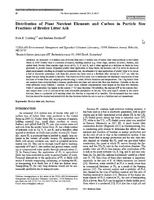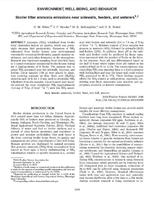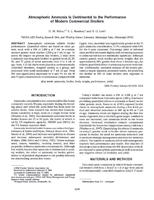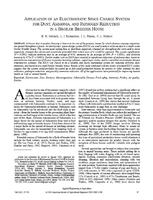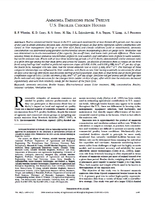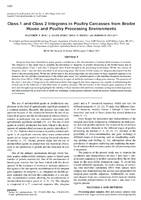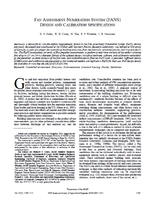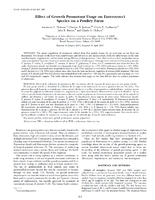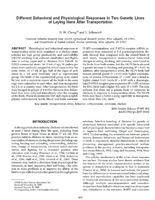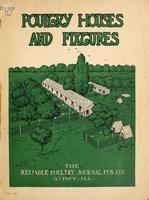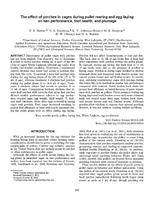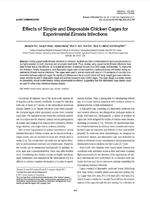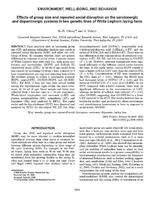Items tagged "poultry housing": 49
Incubators: Cyphers Brooders, Poultry Houses and Appliances, Poultry Foods, Clover and Alfalfa Products, Insecticides and Remedies
Among the pages of this Annual Catalogue and Guide will be found two chapters that are of special interest ; one tells of the remarkable growth and present magnitude of what today is known as, the Poultry Industry; the other describes and seeks to explain the rapid increase in the prices of market poultry and eggs during the last six years. The…
Poultry House Construction
Hens need a comfortable house, one that is dry and roomy, with plenty of fresh air and sunlight. It never pays to overcrowd them.
A plain shed-roof house is most economical, and most satisfactory. It should be so arranged that it will be easy to clean and for general convenience.
It is easier to keep the birds healthy, and to reproduce the…
A plain shed-roof house is most economical, and most satisfactory. It should be so arranged that it will be easy to clean and for general convenience.
It is easier to keep the birds healthy, and to reproduce the…
Poultry Houses
Poultry houses or other buildings where fowls are kept should be dry, well ventilated, free from drafts, with plenty of sunshine and room enough to allow the birds to move about with freedom and comfort. These are necessary factors, in fact much more important than the kind or style of building used, if the fowls are to be kept healthy, vigorous,…
Pasteurization of chicken litter with steam and quicklime to reduce Salmonella Typhimurium
The nursery industry pasteurizes soil with steam and quicklime to reduce plant pathogens. The mechanism of action for quicklime is the resulting exothermic reaction that occurs when the chemical interacts with water and its ability to increase pH levels. These treatments may also reduce pathogens in a commercial poultry house. In this study,…
Effects of litter amendments on broiler growth characteristics and Salmonella colonization in the crop and cecum
Salmonella can be prevalent in poultry litter and can be a source of contamination for chicks newly arrived at the poultry house. The objective of this study was to determine the effects of litter amendments on broiler grow-out characteristics (BW and feed conversion), litter moisture, and Salmonella enterica serovar Typhimurium colonization in the…
Distribution of Plant Nutrient Elements and Carbon in Particle Size Fractions of Broiler Litter Ash
An estimated 10.8 million tons of broiler litter and 3.0 million tons of turkey litter were produced in the United States in 2009. Poultry litter is a mixture of manure, bedding material (e.g., wood chips, sawdust, or straw), feathers, and spilled feed. Poultry litter contains high levels of Ca, N, P, and K, and is often applied as a fertilizer on…
Broiler litter ammonia emissions near sidewalls, feeders, and waterers
Ammonia (NH3) volatilized from broiler litter diminishes indoor air quality, which can potentially decrease bird productivity. Emissions of NH3 exhausted from broiler houses pose environmental concerns for ecosystem biodiversity, aquatic nutrient enrichment, and particulate formation in the atmosphere. Research was conducted sampling litter (rice…
Atmospheric ammonia is detrimental to the performance of modern commercial broilers
Atmospheric ammonia inhibits broiler performance. Quantified effects are based on older genetic stock with a BW of 2,000 g at 7 wk. In contrast, modern genetic stock reaches 3,200 g at 7 wk of age. To assess the impact on present day broilers, 2 trials were conducted exposing male broilers to graded levels (0, 25, 50, and 75 ppm) of aerial ammonia…
Application of an electrostatic space charge system for dust, ammonia, and pathogen reduction in a broiler breeder house
Airborne dust in poultry housing is known to be one of the primary means by which disease-causing organisms are spread throughout a house. An electrostatic space charge system (ESCS) was used to reduce airborne dust in a small-scale broiler breeder house. The system used ceiling fans to distribute negatively charged air throughout the room and to…
Ammonia Emissions from Twelve U.S. Broiler Chicken Houses
Twelve commercial broiler houses in the U.S. were each monitored for at least thirteen 48 h periods over the course of one year to obtain ammonia emission data. Paired repetition of houses on four farms represents current construction with variety in litter management (built-up or new litter each flock) and climate conditions (cold or mixed-humid).…
Microbial and antibiotic resistant constituents associated with biological aerosols and poultry litter within a commercial poultry house
Poultry are known to harbor antibiotic resistant and pathogenic bacteria, and as such poultry litter and poultry house air can be contaminated with these bacteria. However, the presence of antibiotic resistant bacteria in biological aerosols and litter is largely not understood. The purpose of this study was to determine the amount of aerosolized…
Class 1 and class 2 integrons in poultry carcasses from broiler house and poultry processing environments
Integrons have been identified as major genetic contributors to the dissemination of antimicrobial resistance in bacteria. The objective of this study was to examine the prevalence of integrons in poultry processing at the broiler house and in processing plants. Class 1 and class 2 integrons were found throughout the processing environment. Of…
Fan Assessment Numeration System (FANS) design and calibration specifications
A device for in-situ fan airflow measurement, known as the Fan Assessment Numeration System (FANS) device, previously developed and constructed at the USDA-ARS Southern Poultry Research Laboratory, was refined at University of Kentucky as part of a project for quantifying building emissions from mechanically ventilated poultry and livestock…
Effect of growth promotant usage on Enterococci species on a poultry farm
The species population of enterococci isolated from four poultry houses for six grow-outs on one farm was determined. Two houses on the farm were control houses and did not use any antimicrobials, while two other houses on the farm used flavomycin, virginiamycin, and bacitracin during different poultry grow-outs. Litter, chick boxliners, feed, and…
Different Behavioral and Physiological Responses in Two Genetic Lines of Laying Hens After Transportation
Physiological and behavioral responses to transportation stress were examined in a chicken strain selected for high group productivity and survivability (HGPS) resulting from reduced cannibalism and flightiness in colony cages and in chickens from Dekalb XL (DXL) commercial strain. At 13 wk of age, 96 pullets per strain were randomly assigned to…
Poultry Houses and Fixtures
Poultry houses and fixtures are among the first considerations of a person about to begin breeding poultry. If the buildings are commenced in a haphazard kind of a way disappointments and loss of time are bound to ensue. It will, therefore, be the endeavor in this book to assist the breeder in avoiding the difficulties which arise with a first…
Lighting during grow-out and Salmonella in broiler flocks
Background: Lighting is used during conventional broiler grow-out to modify bird behaviour to reach the goals of production and improve bird welfare. The protocols for lighting intensity vary. In a field study, we evaluated if the lighting practices impact the burden of Salmonella in broiler flocks. Methods: Conventional grow-out flocks reared in…
The effect of perches in cages during pullet rearing and egg laying on hen performance, foot health, and plumage
Enrichment of pullet cages with perches has not been studied. Our objective was to determine if access to metal perches during all or part of the life cycle of caged White Leghorns affected egg traits, foot health, and feather condition. Treatment 1 represented control chickens that never had access to perches during their life cycle. Treatment 2…
Effects of Simple and Disposable Chicken Cages for Experimental Eimeria Infections
During experimental Eimeria infections in chickens, facilities are often contaminated by fecal oocysts known to be highly resistant to both chemical and enzymatic treatments. Thus, studies using experimental Eimeria infections have been limited due to the difficulty of complete elimination of residual oocysts from both cages and facilities. To…
Effects of group size and repeated social disruption on the serotonergic and dopaminergic systems in two genetic lines of White Leghorn laying hens
Farm practices such as increasing group size (GS) and mixing unfamiliar chickens may result in repeated social disruption (RSD) and affect the well-being of hens. To examine whether there are genetic differences in response to social stress, 2 genetic strains of White Leghorn hens were used [i.e., high group production and survivability (HGPS) and…
 An official website of the United States government.
An official website of the United States government.


